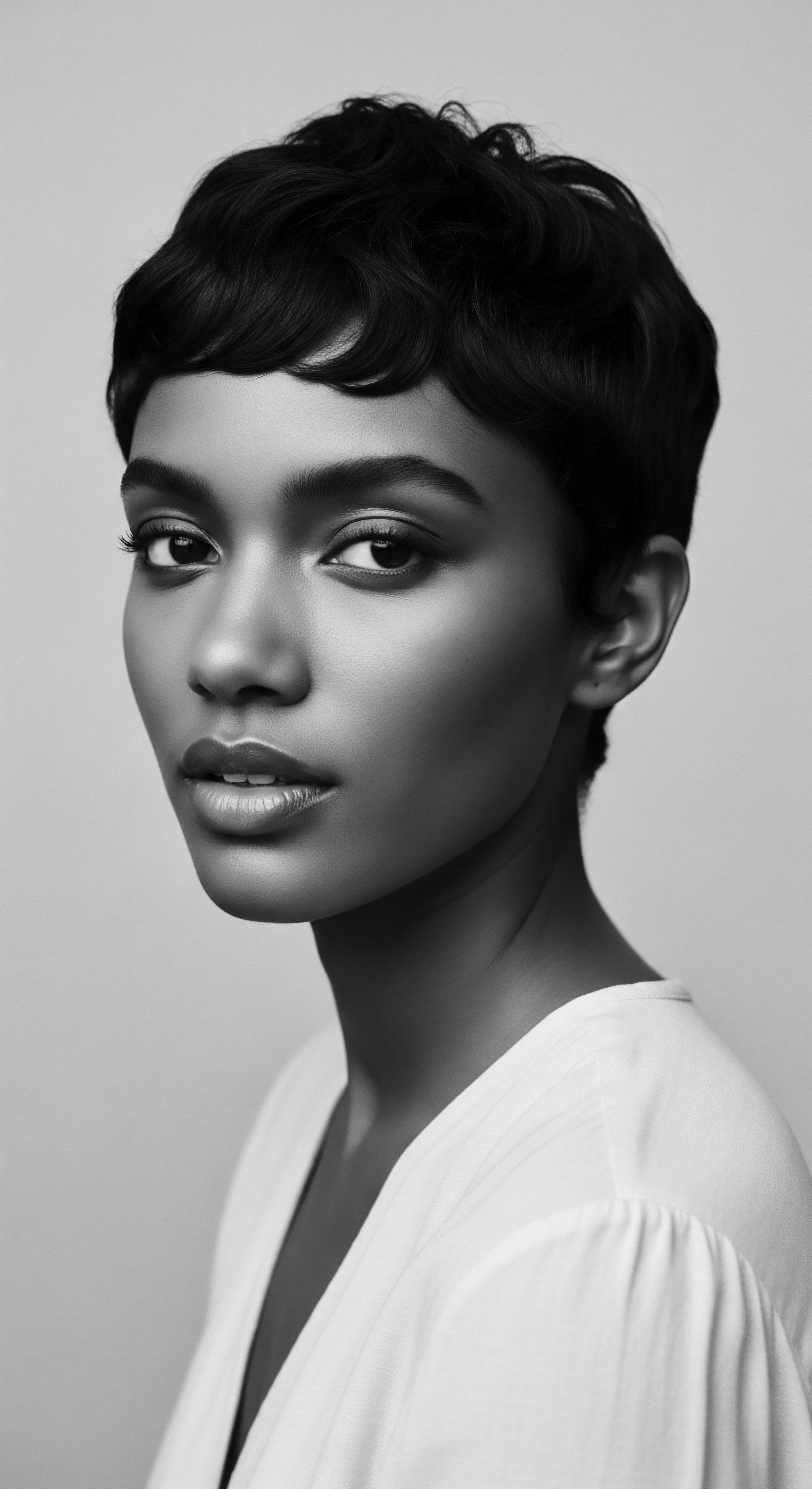
Fundamentals
The concept of Royal Adornment History stands as a testament to humanity’s intrinsic connection with self-expression, identity, and the profound significance imbued in physical form, particularly hair. It is a historical exploration of how hair, often perceived as a mere biological outgrowth, ascended to a revered position within various cultures, especially among those of Black and mixed-race descent. This collective study is a careful examination of the rituals, practices, and symbolic meanings woven into the adornment of hair, signifying status, spiritual alignment, community belonging, and personal narrative across epochs.
From the earliest whispers of communal life, hair has been a canvas, a marker, a sacred antenna. Royal Adornment History, in its most fundamental sense, delves into the ways sovereign figures, spiritual leaders, and those holding esteemed positions within their communities used their hair as a medium for conveying their authority, wisdom, and divine connection. This practice was not a superficial act of vanity; rather, it was a deeply ingrained aspect of societal structure, spiritual belief systems, and the preservation of ancestral knowledge. The hair, in its myriad textures and forms, became a living crown, an extension of one’s lineage and the very essence of their people.
Royal Adornment History uncovers the sacred relationship between hair and power, revealing centuries of intricate practices across diverse cultures.
Across various ancestral traditions, the hair held a singular power. It was considered a vessel for energy, a conduit for spiritual messages, and a repository of personal strength. Hair adornments, therefore, acted as potent symbols, amplifying these inherent qualities. Materials ranged from precious metals and rare gemstones to cowrie shells, beads, and even specific types of flora, each carrying its own layer of cultural significance.
These elements, carefully incorporated into elaborate hairstyles, communicated complex messages about the wearer’s status within the royal lineage, their achievements, their spiritual affiliations, or even their marital status. The historical record suggests that the meticulous crafting of these adornments, and the hair forms they complemented, was a skilled art passed down through generations, often guarded by specialized artisans or elder women who were custodians of this knowledge.
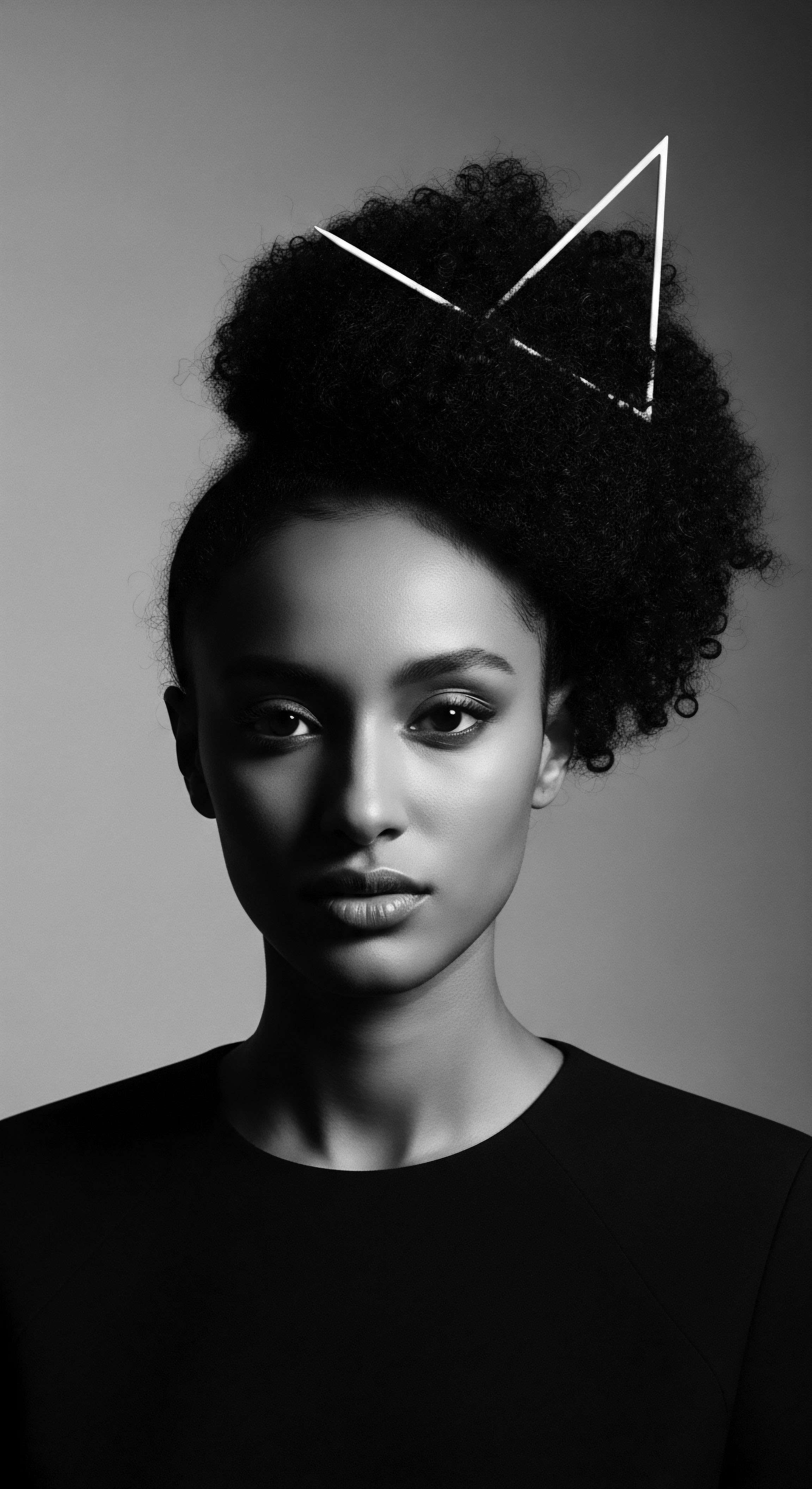
Early Manifestations ❉ Hair as a Royal Proclamation
In ancient civilizations, particularly those in Africa, hair was frequently seen as a literal manifestation of one’s inner vitality and connection to the divine. For monarchs and figures of leadership, the hair became a living testament to their reign, their legacy, and their people’s prosperity. This foundational understanding helps us grasp the deep reverence accorded to hair in these contexts. The act of styling and adorning royal hair was often a ceremonial occasion, imbued with spiritual protocols and communal significance, far removed from simple aesthetic choices.
- Ceremonial Braiding ❉ Often performed by elders, signifying the transfer of wisdom.
- Symbolic Materials ❉ Use of gold, copper, and precious beads to denote wealth and sacred power.
- Protective Styles ❉ Intricate patterns that also served practical purposes, guarding the hair from environmental elements.

The Language of Locks and Coils
For individuals with textured hair, the Royal Adornment History speaks volumes about resilience and self-determination. The inherent structure of coiled and tightly curled hair lends itself to intricate braiding, twisting, and locking techniques that have been perfected over millennia. These techniques, often requiring immense skill and patience, transformed hair into architectural wonders, defying the constraints of gravity and expressing profound artistic sensibility. The capacity of textured hair to hold these elaborate styles meant that it could carry the weight of a people’s history and aspirations, quite literally upon their heads.
The sheer versatility of these hair types allowed for an unparalleled range of expression, from towering coiffures that symbolized elevation and status to meticulously arranged patterns that echoed celestial maps or societal hierarchies. This innate adaptability of textured hair was not merely a physical characteristic; it was a gift, allowing for the creation of adornments that became powerful visual languages.

Intermediate
Expanding upon its foundational understanding, Royal Adornment History, when explored at an intermediate level, unveils a complex interplay between cultural exchange, spiritual significance, and the deliberate shaping of identity through hair. This exploration moves beyond simple definitions, seeking to understand the intricate social fabrics into which royal hair practices were woven. It recognizes that the adornment of hair within ruling classes or spiritual hierarchies was seldom isolated; it was a living dialogue between tradition, innovation, and the ever-shifting currents of human interaction.
Consideration of various historical periods reveals consistent patterns across different civilizations, where hair served as a potent symbol of leadership. From the ancient pharaohs, whose elaborate wigs and headpieces commanded respect and evoked divinity, to the West African monarchs, whose meticulously braided and beaded coiffures signified immense power and spiritual insight, the consistency of hair as a royal marker is evident. This continuity underscores the enduring human inclination to use the body, particularly the hair, as a canvas for communicating complex social and spiritual narratives. The choice of style, the materials integrated into the hair, and the very act of its creation were all deliberate pronouncements, understood and interpreted by the wider community.

The Sacred Threads ❉ Royal Hair and Spirituality
In many ancestral cultures, the reverence for hair was deeply intertwined with spiritual beliefs. Hair was often considered a direct connection to the divine, a spiritual antenna that received and transmitted energies from the cosmos and ancestors. Therefore, the adornment of royal hair often transcended mere earthly status; it became a sacred ritual, a means by which the monarch or leader communed with higher powers. These practices were not random acts of personal preference.
Rather, they were guided by specific cosmological understandings, where certain styles or materials were believed to enhance spiritual receptivity, offer protection, or invoke blessings for the community. The careful tending of royal hair by designated attendants was, in itself, a form of spiritual service, performed with a profound sense of responsibility and reverence.
Hair became a sacred conduit, binding royalty to the divine and embodying the collective spirit of their people.
Within the Yoruba tradition, for instance, hair was often linked to ‘Ori,’ the spiritual consciousness and destiny. For Obas (kings) and other revered figures, the adornment of their hair, whether through specific caps (ade) or intricate braided designs, was a way of honoring and aligning with their Ori. These practices were not just about appearance; they were about affirming their destiny and their role as divinely appointed leaders for their people. The patterns of cornrows might echo symbols of Orishas (deities), or the cowrie shells woven into braids could signify wealth and abundance, blessings from the spiritual realm.
| Historical Context/Culture Ancient Egypt (Pharaohs) |
| Hair Practice/Adornment Elaborate wigs (often blue or gold), false beards, adorned with uraeus (cobra symbol) |
| Meaning/Significance for Royalty/Leadership Divinity, power, purification, protection from the sun, eternal life, identification with deities. |
| Historical Context/Culture Yoruba Kingdoms (Pre-colonial) |
| Hair Practice/Adornment Intricate braided patterns (e.g. Shuku, Abebe), beaded crowns (ade), cowrie shells |
| Meaning/Significance for Royalty/Leadership Spiritual connection to Orishas, divine mandate, prosperity, wisdom, social status, lineage. |
| Historical Context/Culture Maasai (East Africa) |
| Hair Practice/Adornment Red ochre and animal fat applied to braided or locked hair, often extended with fiber |
| Meaning/Significance for Royalty/Leadership Warrior status, courage, spiritual strength, passage rites, social hierarchy. |
| Historical Context/Culture These examples highlight hair's enduring role as a visual language of power, spirituality, and communal identity across diverse royal lineages. |

The Living Legacy ❉ Hair Care as a Royal Practice
The continuity of Royal Adornment History is also reflected in the persistent importance of hair care practices. For royal figures, the maintenance of their hair was not a private affair. It was often a communal activity, performed by trusted individuals, typically elder women who possessed specialized knowledge of herbs, oils, and styling techniques passed down through oral traditions.
These care rituals were integral to the adornment process, ensuring the hair’s health, vitality, and ability to hold complex styles. Understanding this living legacy helps us appreciate the depth of knowledge surrounding hair wellness, a wisdom that predates modern cosmetology and remains profoundly relevant today for textured hair.
The application of natural oils, the use of bone or wooden combs, and the meticulous cleansing rituals were all part of a holistic approach to hair that recognized its sacredness. These traditions often connected hair care to broader wellness practices, linking physical health to spiritual well-being. For example, specific herbal rinses were believed to not only cleanse the hair but also to purify the spirit, preparing the wearer for their royal duties or spiritual obligations.

Academic
The academic understanding of Royal Adornment History necessitates a rigorous, multi-disciplinary examination, moving beyond superficial definitions to explore the complex interplay of biological, sociological, and anthropological factors that shaped hair practices among royal and revered figures. It is an intellectual pursuit of the deep meaning and historical trajectory of hair as a symbol of power, spiritual connection, and collective identity within Black and mixed-race hair heritage. This scholarly exploration reveals that hair, particularly textured hair, was not merely an aesthetic choice but an active participant in the construction and maintenance of social order, religious belief systems, and the very fabric of monarchical or leadership authority.
A comprehensive delineation of Royal Adornment History requires acknowledging its roots in elemental biology. The unique structural properties of coiled and tightly curled hair—its elasticity, its ability to compress and expand, its inherent strength—provided an unparalleled medium for architectural and symbolic manipulation. These biological predispositions, often overlooked in Eurocentric hair narratives, were foundational to the development of complex, gravity-defying styles.
The meaning of these styles transcended mere aesthetics; they were visual pronouncements, conveying messages understood across the societal spectrum. The inherent resilience of textured hair allowed for practices that built upon its natural inclinations, creating forms that were simultaneously protective and performative.

Meaning and Elucidation ❉ Royal Hair as a Semiotic System
At its core, Royal Adornment History represents a sophisticated semiotic system where hair acted as a primary signifier within specific cultural grammars. The choice of style, the intricacy of patterns, the inclusion of specific adornments, and even the manner of hair preparation all contributed to a complex communicative code. This code conveyed the wearer’s lineage, their current status, their spiritual affiliations, and their perceived access to cosmic energies.
For instance, in many West African kingdoms, specific braided patterns (such as those that spiraled upwards or created geometric formations) were reserved exclusively for royalty, signaling their divine right to rule and their unique connection to ancestral spirits. The interpretation of these visual cues was universally understood within the community, reinforcing the social hierarchy and the legitimacy of the ruling elite.
The term ‘meaning’ in this context extends to the practical implications of these adornments. These were not just visual statements; they often dictated interactions, established social boundaries, and even influenced diplomatic relations. The deliberate display of royal hair, therefore, served as a powerful tool for governance and social cohesion. It was a tangible manifestation of intangible authority.
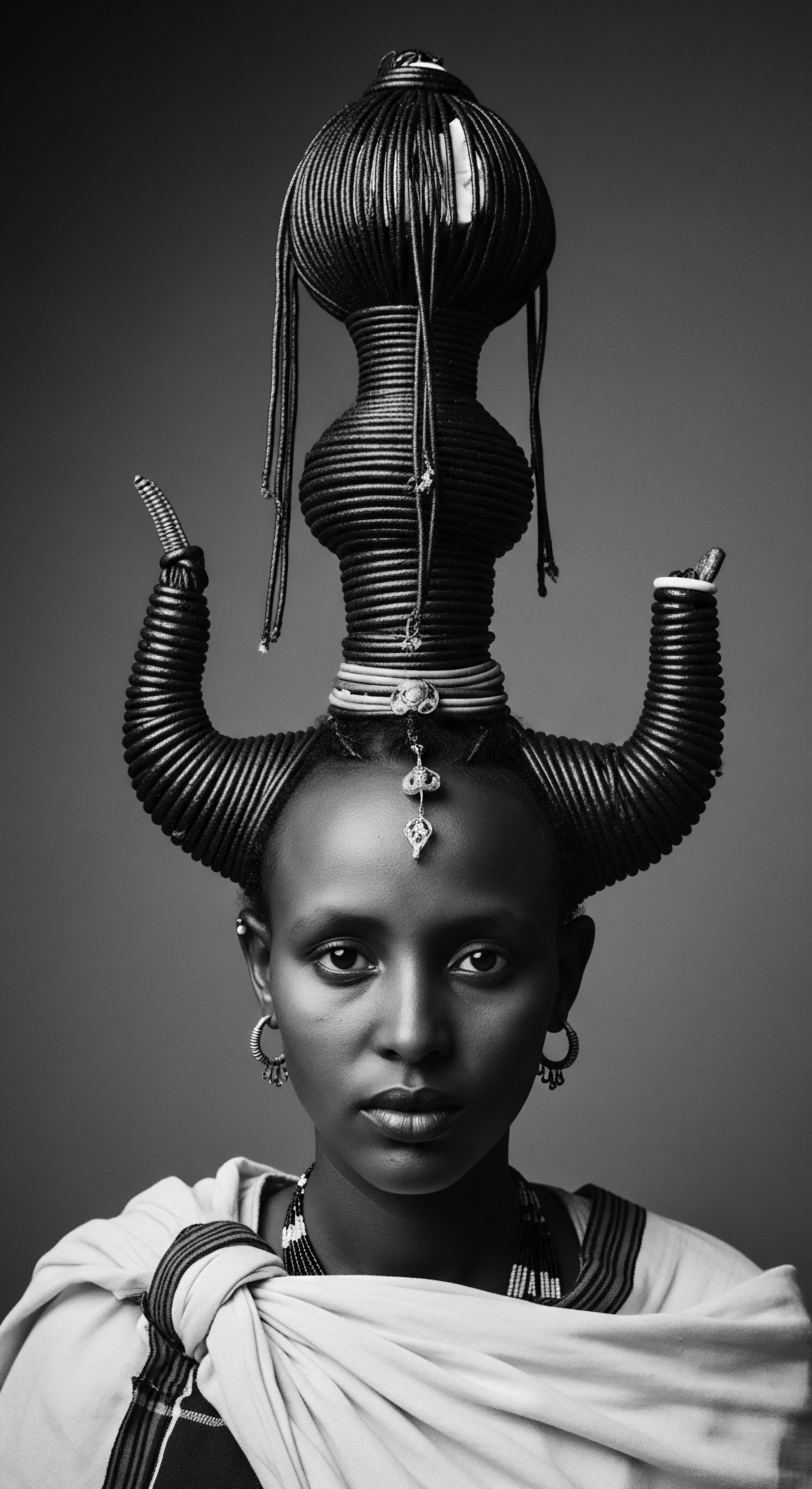
A Case Study in Ancestral Practices ❉ The Sacred Hair of the Yoruba Monarchy
To exemplify the depth of Royal Adornment History’s connection to textured hair heritage, consider the historical practices surrounding royal hair within the Yoruba kingdoms of West Africa. For centuries, the Obas (kings) and Iyalodes (female community leaders) of Yoruba society employed intricate hair styles and adornments as critical markers of their sovereignty and spiritual authority. Unlike European monarchies where crowns often rested upon the hair, Yoruba traditions frequently integrated adornments into or as the hair itself, recognizing the hair’s inherent sacredness.
One particularly striking example is the significance of the Shuku or Kiko braiding patterns on royal heads. These elaborate styles, often characterized by hair intricately braided upwards to form a crest or conical shape, were not merely decorative. They carried profound cosmological and social significance.
According to the late historian and scholar of Yoruba culture, Professor Wande Abimbola, the directionality of certain braids, particularly those reaching skyward, symbolized the upward connection to the spiritual realm and to Olodumare (the Supreme Being) and the Orishas (deities). This belief system posited that the head, or Ori, was the seat of a person’s destiny and spiritual essence, and therefore, royal hair, meticulously styled and adorned, was a direct conduit for divine blessings and wisdom.
A significant statistic, though rarely isolated in published ethnographic texts, is the estimated commitment of time and resources. Historical accounts, often conveyed through oral traditions and recorded by early ethnographers like Samuel Johnson (1897), suggest that the preparation of a royal hairstyle for a major ceremony, especially for an Oba, could involve a specialized team of hair artisans working for Upwards of 8 to 12 Continuous Hours, sometimes over multiple days, using natural fibers to extend the hair and incorporating thousands of cowrie shells, coral beads, or pieces of precious metal. This immense investment of labor and valuable materials underscores the profound significance attributed to the hair, demonstrating that its adornment was an economic and social undertaking, not a casual aesthetic choice. The sheer scale of this dedication is a powerful testament to the hair’s role as a living emblem of regal power and divine connection.
The meticulous crafting of Yoruba royal hair, often consuming days and thousands of precious adornments, embodies a deep ancestral commitment to visual sovereignty.
The choice of adornments, such as Cowrie Shells, often held dual meanings ❉ they were a form of ancient currency, symbolizing wealth and prosperity, and they were also linked to Orisha Oshun, deity of rivers, sweetness, and fertility. Incorporating these shells into royal hair directly invoked Oshun’s blessings for the kingdom’s prosperity and the ruler’s wisdom. Similarly, coral beads, especially the deep red varieties, were highly prized and worn by royalty as symbols of status, protection, and connection to the ancestors.
The practice was not static; it evolved over centuries, absorbing influences while maintaining its core reverence. Even under colonial pressures, the insistence on maintaining certain traditional hairstyles and adornments became a quiet act of resistance, a visual assertion of cultural sovereignty. The continued use of these symbols, even when adapted, spoke volumes about the enduring power of hair as a cultural anchor.
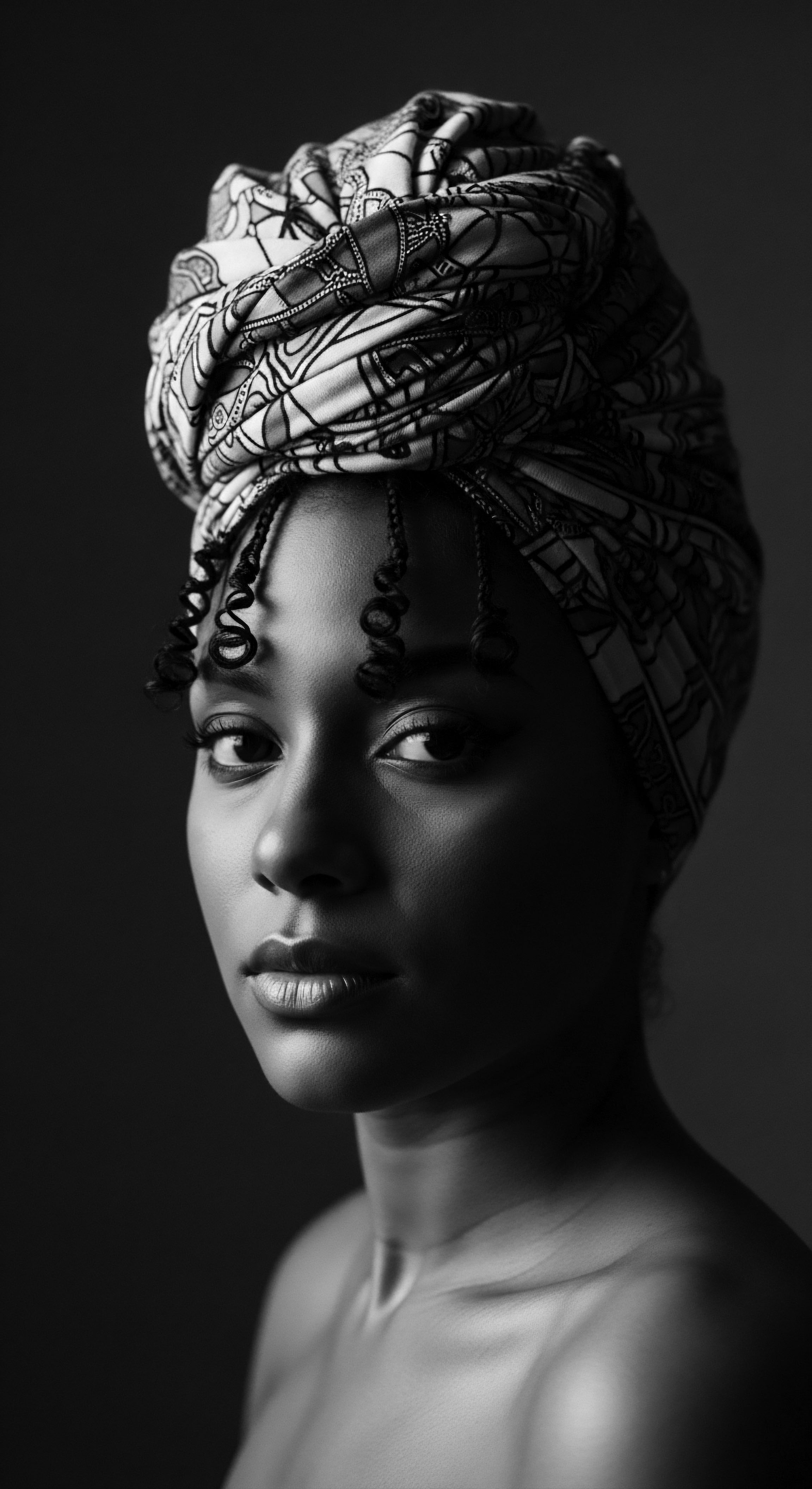
Interconnectedness Across Fields ❉ Anthropology, Sociology, and Hair as Power
Academically, Royal Adornment History offers a fertile ground for interdisciplinary study. Anthropologists scrutinize the cultural variations and the transmission of hair knowledge across generations. Sociologists examine the power dynamics embedded in hair practices, how styles conferred status, and how colonial suppression of traditional hair further marginalized communities.
Psychologists might explore the deep psychological impact of hair on self-perception and collective identity. The convergence of these perspectives paints a comprehensive picture of how hair, particularly for those whose heritage links them to textured hair, becomes a focal point for understanding societal structures, spiritual worldviews, and human resilience.
The long-term consequences of this historical lens are profound. By reclaiming and studying these ancestral practices, contemporary understanding is deepened regarding the enduring importance of hair wellness and identity for Black and mixed-race individuals. This is not merely historical review; it is a vital re-centering of narratives often pushed to the periphery, affirming the intrinsic value and ingenuity within these traditions.
It provides insights into how communal support systems were built around hair care, reflecting broader societal values of interconnectedness and shared responsibility. The academic pursuit of Royal Adornment History thereby transcends mere description, becoming a tool for cultural affirmation and empowerment.
- Ritualistic Care ❉ The systematic daily or weekly care protocols for royal hair, often performed by dedicated attendants, were integral to maintaining both health and ceremonial readiness.
- Symbolic Geometries ❉ The specific geometric patterns of braids or twists often mirrored cosmological symbols or geographical features sacred to the kingdom, thus binding the ruler to their land and beliefs.
- Material Significance ❉ The selection of specific beads, metals, or organic elements for adornment was never arbitrary; each carried a codified meaning relating to power, protection, or spiritual blessing.

Reflection on the Heritage of Royal Adornment History
The journey through Royal Adornment History unveils a profound truth ❉ hair, particularly textured hair, has always been more than mere fiber. It stands as a living archive, a scroll of ancestral wisdom, and a vibrant testament to resilience. This historical review, steeped in the unique experiences of Black and mixed-race communities, invites a deeper connection to our personal strands, viewing them not just as a part of our physical being but as a direct link to those who came before us. The meticulous care, the intricate artistry, and the profound symbolic weight once attributed to royal hair echo through generations, offering a blueprint for contemporary appreciation and understanding.
As we gaze upon the intricate patterns of cornrows or the majestic presence of locs, we are not just seeing a style. We are witnessing the enduring spirit of our ancestors, their creativity, their reverence for self, and their unwavering spirit. Each twist, each braid, each chosen adornment carries the whisper of ancient hands and the silent strength of those who wore their heritage with undeniable pride. This reflection encourages a conscious reconnection to those ancestral care rituals, not as rigid rules but as guiding principles that honor the unique biology of our hair and its deep cultural memory.
Our textured hair carries the indelible marks of ancestral power and identity, beckoning us to listen to its ancient stories.
The enduring significance of Royal Adornment History reminds us that our hair is a sacred trust, a living legacy that connects the elemental biology of our being to the boundless potential of our future. It is a continuous narrative of identity, self-definition, and communal strength, patiently waiting for us to listen to its stories, to honor its journey, and to continue its tradition of regal adornment in our own unique ways. This ancestral connection is not a relic of the past; it is a vibrant, living force that breathes through every coil and strand, inviting us to wear our heritage with unapologetic grace and profound understanding.
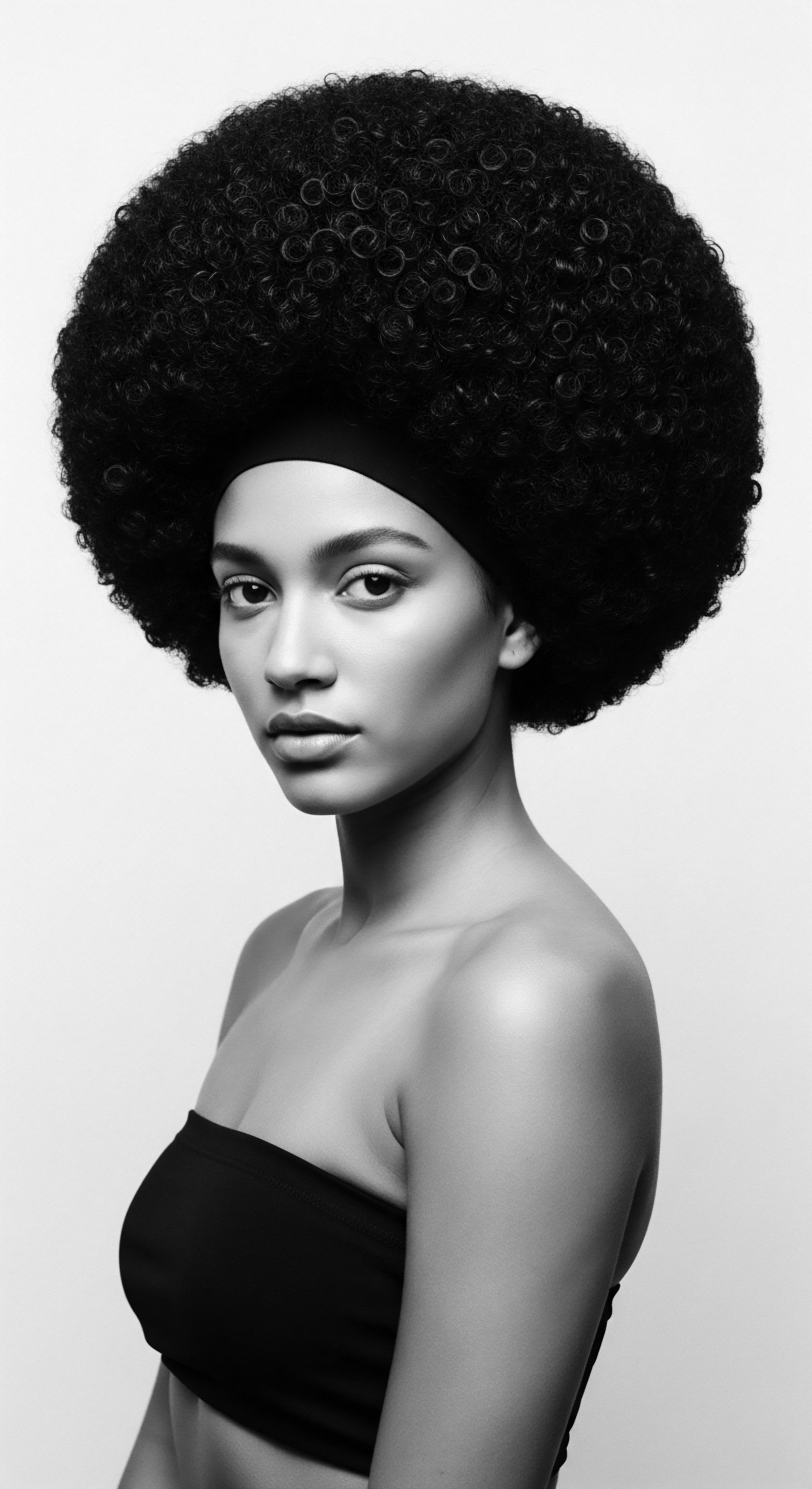
References
- Abimbola, W. (1976). Ifa ❉ An Exposition of Ifa Literary Corpus. Ibadan ❉ Oxford University Press.
- Johnson, S. (1897). The History of the Yorubas from the Earliest Times to the Beginning of the British Protectorate. Lagos ❉ C.M.S. Bookshop.
- Sieber, R. & Herreman, F. (2000). Hair in African Art and Culture. New York ❉ The Museum for African Art.
- Thompson, R. F. (1983). Flash of the Spirit ❉ African and Afro-American Art and Philosophy. New York ❉ Random House.
- Drewal, H. J. & Drewal, M. T. (1990). Yoruba ❉ Nine Centuries of African Art and Thought. New York ❉ H.N. Abrams.
